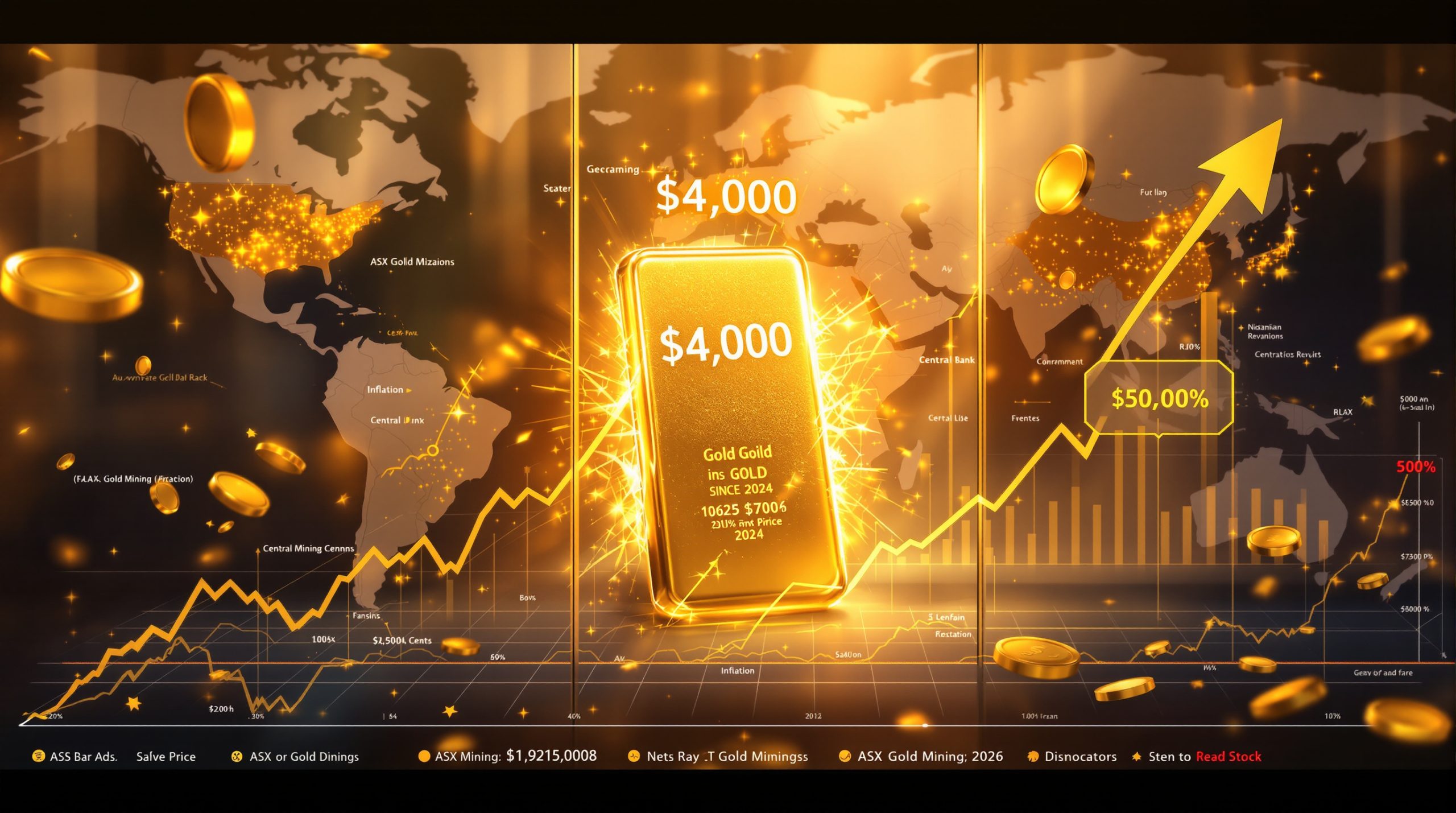The Golden Era: Understanding the Cyclical Bull Market in Gold and Silver
A cyclical bull market in gold and silver represents a sustained period of price appreciation driven by specific economic, monetary, and market conditions. Unlike short-term rallies, these cycles typically last 2-5 years within broader secular trends and feature distinctive characteristics that separate them from normal market fluctuations.
Understanding these cyclical patterns offers investors valuable insights into potential investment opportunities and helps frame market expectations during periods of precious metals strength.
What Defines a Cyclical Bull Market in Precious Metals?
Cyclical bull markets in precious metals feature several key characteristics that distinguish them from temporary price rallies. These multi-year periods of sustained upward momentum are driven by fundamental economic factors rather than purely speculative interest.
The hallmarks of genuine precious metals bull markets include:
- Sustained upward price momentum that continues through normal market volatility
- Fundamental economic and monetary policy drivers supporting higher prices
- Technical breakouts from long-term consolidation patterns establishing new trading ranges
- Increasing institutional participation followed by growing retail interest as the cycle matures
- Relative outperformance compared to other asset classes during specific economic phases
These bull cycles typically emerge during periods of economic uncertainty, inflation concerns, or shifts in monetary policy. They represent more than just short-term price fluctuations, instead reflecting deeper structural changes in market sentiment toward hard assets.
Distinguishing Cyclical from Secular Bull Markets
While cyclical bull markets typically last 2-5 years, secular bull markets can extend for decades, containing multiple cyclical bull and bear phases within them. The 1970s represented a secular bull market for gold with two distinct cyclical bull phases (1970-1974 and 1976-1980).
Understanding whether we're in a cyclical move within a larger secular trend provides crucial context for investment timeframes and expectations.
What Historical Patterns Reveal About Gold Bull Markets
Historical analysis of gold market strategies provides valuable context for understanding potential trajectories, duration expectations, and price targets. By examining past cycles, investors can better gauge where we might be in the current market phase.
Key Historical Gold Bull Cycles and Their Performance
Historical gold bull markets demonstrate remarkable patterns when analyzed across multiple decades:
| Time Period | Duration | Price Movement | Key Drivers | Peak Price |
|---|---|---|---|---|
| 1970-1974 | 4 years | +458% | Dollar devaluation, oil crisis | $195/oz |
| 1976-1980 | 4 years | +721% | Stagflation, geopolitical crisis | $850/oz |
| 2005-2008 | 3 years | +167% | Housing bubble, dollar weakness | $1,011/oz |
| 2008-2011 | 3 years | +166% | Great Recession, QE programs | $1,923/oz |
These historical precedents reveal that gold bull markets following major breakouts to new all-time highs (like in 1972, 2009, and more recently) have produced average gains of 300-500% over 3-4 years.
Analyzing Historical Breakout Patterns
Technical breakouts from long-term consolidation patterns have historically preceded major bull markets in gold. The 1970s bull market began after gold broke above the long-standing $35/oz price ceiling, while the 2000s bull phase accelerated after breaking through the psychological $1,000/oz barrier in 2009.
Major technical breakouts often signal the beginning of significant multi-year advances as overhead resistance is eliminated and new participants enter the market.
Duration Expectations Based on Historical Cycles
Historical gold bull markets have typically lasted 3-5 years before experiencing major corrections or entering bear market phases. The 1970s cycles each lasted approximately 4 years, while the 2000s bull phases averaged about 3 years each.
These timeframes provide a reasonable expectation for the potential duration of current and future bull market cycles, although economic conditions and monetary policy shifts can either extend or contract these historical averages.
Why Are Gold and Silver Breaking Out Now?
Several powerful catalysts have converged to create favorable conditions for precious metals, explaining the recent strength in gold and silver markets.
Macroeconomic Catalysts Driving Precious Metals Demand
The current environment features multiple supportive factors for precious metals:
-
Monetary Policy Shifts: Central banks transitioning from tightening to easing cycles historically benefit precious metals by reducing the opportunity cost of holding non-yielding assets.
-
Persistent Inflation Concerns: Despite moderation in headline inflation figures, underlying price pressures remain elevated in many economies, enhancing gold's appeal as an inflation hedge.
-
Geopolitical Tensions: Ongoing conflicts and trade disputes have increased safe-haven demand for precious metals as portfolio insurance.
-
Central Bank Buying: Substantial gold purchases by global central banks, particularly from emerging economies seeking to reduce dollar dependence, have provided structural support.
-
Technical Breakouts: Decisive moves above previous resistance levels have eliminated overhead supply and attracted momentum-based capital.
-
Debt Crisis Concerns: Growing sovereign debt levels worldwide have raised questions about fiat currency stability, benefiting alternative stores of value.
The Role of Central Bank Gold Purchases
Central bank gold buying has emerged as a significant factor supporting precious metals prices. According to the World Gold Council, central banks have substantially increased their gold reserves in recent years, reflecting a desire to diversify away from traditional reserve currencies, particularly the US dollar.
This trend represents a structural shift in the gold market, with sovereign buyers providing consistent demand regardless of short-term price fluctuations. Countries like China, Russia, Turkey, and India have been particularly active in expanding their gold reserves.
Inflation as a Persistent Driver
While official inflation readings have moderated from recent peaks, underlying price pressures remain elevated across many sectors of the economy. Housing costs, services inflation, and wage growth continue to run above historical averages in many developed economies.
Gold has historically served as an effective hedge against both expected and unexpected inflation, particularly during periods when real interest rates (nominal rates minus inflation) remain negative or low. The latest gold prices analysis shows this relationship continues to hold true.
How Does Silver Perform During Gold Bull Markets?
Silver typically follows gold's lead during precious metals bull markets but exhibits distinctive performance characteristics that create unique investment opportunities.
Silver's Historical Performance Following Gold Breakouts
Silver often displays a delayed reaction to gold's initial strength but tends to deliver superior percentage gains once it catches up to the trend. Analysis of silver's performance after gold breaks to new all-time highs reveals several consistent patterns:
-
Lagging Initial Response: Silver frequently lags gold's initial breakout by 3-6 months as gold attracts the first wave of investment capital.
-
Superior Percentage Gains: Once silver catches up, it typically delivers 2-3x the percentage gains of gold due to its smaller market size and greater price elasticity.
-
Key Resistance Levels: The $50/oz level has proven to be psychologically significant resistance in previous cycles (reached briefly in both 1980 and 2011).
-
Increased Volatility: Silver experiences greater price swings in both directions, requiring investors to tolerate higher volatility for potentially greater returns.
Understanding the Gold-to-Silver Ratio
The gold-to-silver ratio—which measures how many ounces of silver it takes to purchase one ounce of gold—serves as a valuable indicator for precious metals investors. This ratio has fluctuated significantly throughout history:
- Long-term historical average: Approximately 45-55:1
- Recent decades average: Approximately 65-70:1
- Cycle extremes: Has ranged from below 20:1 (1980) to above 120:1 (2020)
The ratio typically contracts during bull markets as silver outperforms gold, particularly in the middle and later stages of the cycle. Extreme readings in either direction often signal potential turning points or opportunities for tactical metal rotation.
Silver's Dual Nature: Monetary and Industrial Metal
Unlike gold, which serves primarily as a monetary metal and store of value, silver maintains a dual role as both a precious metal and an industrial commodity. This creates unique supply-demand dynamics, as roughly 50% of silver demand comes from industrial applications.
The potential for a silver market squeeze becomes more pronounced during periods of strong industrial demand coinciding with investment interest. Silver's industrial demand profile includes:
- Traditional applications: Photography, silverware, jewelry
- Modern technology: Electronics, solar panels, medical applications
- Emerging uses: Electric vehicles, 5G infrastructure, antimicrobial applications
This industrial component can create additional price catalysts during periods of economic growth, potentially amplifying silver's performance during certain phases of the economic cycle.
What Price Targets Can We Expect for Gold and Silver?
Historical analysis provides a framework for understanding potential price objectives during precious metals bull markets, though all price projections should be viewed as speculative rather than definitive forecasts.
Gold Price Projections Based on Historical Analogs
Multiple analytical approaches can inform potential price targets for gold:
-
Historical Bull Market Averages: Previous gold bull markets have delivered average gains of 300-500% from their starting points. Applied to current price levels, this would suggest potential targets in the $5,000-6,000/oz range over a multi-year timeframe.
-
Technical Measured Moves: Technical analysis of breakout patterns and consolidation ranges can project near-term targets. Recent consolidation patterns suggest potential near-term objectives in the $3,750-3,950/oz range.
-
Inflation-Adjusted Targets: Gold's 1980 peak of $850/oz would equate to approximately $4,000-4,500/oz in today's dollars, accounting for cumulative inflation.
-
Monetary Base Ratios: Gold's price relative to monetary aggregates and central bank balance sheets suggests potential for significant upside if historical relationships reassert themselves.
Important Disclaimer: All price projections represent potential scenarios based on historical patterns and are not guaranteed outcomes. Markets are influenced by countless variables, and actual price movements may differ significantly from historical analogs. Investment decisions should be based on individual risk tolerance and financial circumstances.
Silver Price Projections and the Critical $50 Threshold
Silver's price projections show even more dramatic potential due to its historical volatility and higher beta relative to gold:
-
Historical Cycle Analysis: Previous silver bull markets have delivered gains ranging from 400% to over 1,000%. Applied to current prices, this suggests potential targets ranging from $60/oz to well over $100/oz in a strong bull scenario.
-
Gold-Silver Ratio Normalization: A reversion of the gold-silver ratio toward its long-term average would imply significant silver outperformance. A move toward the historical average ratio of 45-55:1 would suggest substantial upside for silver relative to gold.
-
The $50 Psychological Barrier: Silver has twice reached but failed to sustainably break above $50/oz (in 1980 and 2011). A decisive break above this level could potentially trigger accelerated momentum as this major resistance is eliminated.
Technical analysts note that the longer a significant resistance level holds, the more powerful the move can be when that level is finally breached. The $50/oz level represents multi-decade resistance for silver, suggesting the potential for dramatic price action if exceeded.
How Do Junior Mining Stocks Perform in Precious Metals Bull Markets?
Mining stocks, particularly junior companies, typically offer leveraged exposure to precious metals price movements, presenting both enhanced return potential and increased risk.
Understanding the Leverage Effect in Mining Equities
Mining stocks tend to outperform the underlying metals during bull markets due to operational leverage:
- Revenue Growth: Mining companies experience direct revenue increases as metal prices rise
- Margin Expansion: Fixed costs represent a large portion of mining operations, so revenue increases flow disproportionately to the bottom line
- Resource Valuation: Higher metal prices increase the value of unmined reserves and resources
- Exploration Premium: Rising metal prices justify exploration in previously uneconomic areas
This leverage effect typically follows a hierarchy:
- Major Producers: Established companies with significant production (typically 2-3x metals performance)
- Mid-Tier Producers: Medium-sized companies with growing production (typically 3-5x metals performance)
- Junior Producers: Smaller producers with higher costs (typically 5-7x metals performance)
- Developers/Explorers: Pre-production companies with resource potential (can deliver 10x+ metals performance in favorable scenarios)
Historical Performance of Junior Mining Stocks
Junior mining investments have historically delivered extraordinary returns during strong precious metals bull markets:
- During the 2001-2007 period, a basket of junior silver mining stocks delivered approximately 100x returns from bottom to peak
- The 2008-2011 bull phase saw junior miners outperform physical silver by factors of 3-5x
- The 2016-2020 period showed junior miners delivering 3-7x the returns of the underlying metals
However, this outperformance comes with significantly higher volatility and deeper corrections during consolidation phases. Junior miners typically experience 40-60% drawdowns even within ongoing bull markets, testing investor resolve and patience.
Key Selection Criteria for Junior Mining Investments
While junior miners offer tremendous upside potential, their selection requires careful analysis as company-specific factors can significantly impact performance:
- Project Economics: Viability at various metal price points
- Jurisdiction: Political and regulatory environment
- Management Track Record: Previous success in developing similar projects
- Balance Sheet Strength: Funding requirements and dilution risk
- Development Timeline: Proximity to production and cash flow
- Resource Quality: Grade, metallurgy, and expansion potential
Investors seeking exposure to this sector should recognize that company-specific factors can outweigh general market trends, with selection quality often determining ultimate returns more than the broader sector performance. For those interested in larger companies, understanding different gold mining stocks is essential to building a balanced portfolio.
What Are the Key Indicators to Watch for Cycle Progression?
Several key indicators help investors track the progression of precious metals bull markets and identify potential turning points.
Signposts for Monitoring Bull Market Development
To gauge the health and maturity of the current gold and silver bull market, investors should monitor several key indicators:
-
Gold-to-Silver Ratio: A declining ratio typically indicates a healthy bull market with silver outperforming, while a rising ratio may signal caution.
-
Mining Stock to Metal Ratio: Mining stocks outperforming the metals suggests strong market conviction, while underperformance can signal waning momentum.
-
Institutional Participation: Increasing allocation to precious metals from pension funds and asset managers often marks the middle stages of a bull market.
-
Retail Interest: Significant retail participation typically emerges in the later stages of bull markets, with extreme retail enthusiasm potentially signaling cycle maturity.
-
Technical Consolidations: Healthy bull markets feature periodic consolidations that establish new support levels without breaking major uptrends.
-
Central Bank Buying Patterns: Consistent or accelerated central bank purchases support the structural bull case, while slowing purchases might signal caution.
Sentiment Indicators and Their Significance
Market sentiment provides valuable insights into potential turning points:
- Futures Positioning: Extreme readings in the Commitment of Traders report can signal short-term overbought or oversold conditions
- Fund Flows: ETF inflows and outflows reflect changing institutional and retail sentiment
- Media Coverage: Mainstream financial media attention often increases as bull markets mature
- Analyst Consensus: Widespread bullish consensus can paradoxically signal caution, while persistent skepticism suggests further upside potential
Contrarian investors often find value in monitoring sentiment extremes, as precious metals markets frequently deliver their best performances when sentiment is recovering from pessimistic extremes rather than when optimism is already widespread.
How Should Investors Position for a Precious Metals Bull Market?
Strategic positioning for a cyclical bull market in gold and silver requires careful consideration of allocation, timing, and vehicle selection.
Strategic Considerations for Precious Metals Investors
Based on historical patterns and current market positioning, investors might consider several strategic approaches:
-
Core Position Allocation: Determine appropriate portfolio allocation to precious metals based on individual risk tolerance and economic outlook.
-
Metal Selection Strategy: Consider relative value between gold and silver based on the gold-silver ratio and cycle progression.
-
Vehicle Selection Framework: Evaluate options including physical metals, ETFs, mining stocks, and royalty/streaming companies based on risk preferences.
-
Entry Point Strategy: Use technical consolidations and sentiment-driven pullbacks for potential entry or addition points.
-
Position Sizing Discipline: Consider scaling approaches that allow for adding during corrections without overextending.
-
Exit Strategy Development: Define clear criteria for reducing exposure based on technical, sentiment, and fundamental factors.
Physical Metals vs. Mining Stocks: Complementary Approaches
Different precious metals investment vehicles offer distinct risk-reward profiles:
Physical Metals:
- Lower volatility with direct price exposure
- No counterparty risk when properly stored
- No operational or management risk
- Limited upside leverage compared to mining stocks
Mining Stocks:
- Significant operational leverage to metal prices
- Potential dividend income
- Acquisition potential premium
- Higher volatility and company-specific risks
Many experienced precious metals investors maintain core positions in physical metals while using mining stocks for tactical allocation and enhanced returns during favorable periods.
Risk Management in Volatile Markets
Effective risk management is essential when investing in historically volatile assets like precious metals:
- Position Sizing: Limit allocation to appropriate levels based on portfolio size and risk tolerance
- Diversification Within the Sector: Spread mining stock investments across multiple companies and jurisdictions
- Technical Stop Levels: Consider predefined exit points for trading positions while maintaining core holdings
- Periodic Rebalancing: Harvest gains during strong advances and reallocate during corrections
- Long-Term Perspective: Recognize that even strong bull markets experience 15-20% corrections
Investment Disclaimer: Precious metals and mining stocks can experience significant volatility. Past performance does not guarantee future results. Investors should carefully consider their financial situation, risk tolerance, and investment objectives before making any investment decisions.
What Could Derail the Current Bull Market?
While historical patterns favor continued strength in precious metals, several factors could challenge the bullish outlook.
Potential Risks to the Bullish Outlook
Investors should remain vigilant regarding several potential risks:
-
Unexpected Monetary Tightening: A return to aggressive interest rate hikes would likely create headwinds for precious metals by increasing the opportunity cost of holding non-yielding assets.
-
Deflationary Economic Crisis: A severe deflationary episode could temporarily pressure all asset prices, including precious metals, as witnessed briefly during March 2020.
-
Regulatory Intervention: Government restrictions on precious metals ownership or trading could create market disruptions, though historically such actions have ultimately been bullish.
-
Technical Breakdowns: Failure to maintain key support levels could trigger stop-loss selling and delay projected timelines.
-
Dollar Strength: Periods of exceptional dollar strength can create temporary headwinds for dollar-denominated precious metals prices.
-
Risk Appetite Extremes: Periods of either extreme risk aversion or extreme risk-seeking behavior can temporarily disrupt precious metals trends.
However, historical evidence suggests that most corrections within established bull markets have proven to be buying opportunities rather than cycle-ending events. The 2008 correction during the 2000s gold bull market provides a notable example of a significant pullback that ultimately led to new highs.
Monitoring Economic Conditions
Key economic indicators warrant ongoing monitoring:
- Real Interest Rates: The relationship between nominal interest rates and inflation remains a crucial driver for gold prices
- Central Bank Balance Sheets: Changes in monetary policy stance and liquidity provision
- Currency Market Volatility: Instability in major currency pairs often benefits precious metals
- Credit Market Stress: Widening spreads in corporate and sovereign debt markets can signal increasing systemic risk
Many analysts note that precious metals often perform best not during extreme crisis periods themselves but during the subsequent monetary response phases when liquidity is abundant and confidence in conventional assets is being rebuilt.
Frequently Asked Questions About Gold and Silver Bull Markets
How Long Do Cyclical Bull Markets in Precious Metals Typically Last?
Cyclical bull markets in gold and silver typically last 3-5 years, though they can extend longer when part of a broader secular bull market in gold and silver. Historical examples include the 1970-1974 bull market (4 years), the 1976-1980 bull market (4 years), and the 2008-2011 bull market (3 years).
The duration depends on underlying economic conditions, monetary policy cycles, and the strength of the fundamental drivers supporting precious metals prices.
What Typically Signals the End of a Precious Metals Bull Market?
Bull markets in gold and silver typically end when several conditions converge:
- Extreme public participation reaches a fever pitch, with widespread media coverage
- Price movements become parabolic and technically unsustainable
- Central banks shift to aggressive tightening cycles to combat inflation
- Technical exhaustion patterns appear on long-term charts
- Bullish consensus becomes nearly universal among market participants
The 1980 and 2011 bull market peaks both featured several of these characteristics, particularly parabolic price action followed by technical exhaustion.
How Does Silver's Performance Compare to Gold During Bull Markets?
Silver typically outperforms gold during bull markets, delivering 2-3x the percentage gains in many historical cycles. However, silver also experiences greater volatility and often lags during the initial stages before catching up and surpassing gold's performance in the middle and later stages of the cycle.
This pattern reflects silver's smaller market size, greater industrial demand component, and higher beta characteristics relative to gold.
What Role Do Mining Stocks Play in a Precious Metals Portfolio?
Mining stocks typically offer leveraged exposure to metals prices, with quality producers often delivering 2-3x the returns of the underlying metals during bull markets. Junior explorers and developers can provide even greater upside but with substantially increased risk and volatility.
Many experienced precious metals investors maintain a barbell approach: core positions in physical metals for stability combined with selected mining stocks for enhanced returns during favorable market periods.
How Do Interest Rates Affect Gold and Silver Prices?
The relationship between interest rates and precious metals is complex but generally follows these principles:
- Real Interest Rates: Negative real rates (nominal rates below inflation) are typically bullish for precious metals
- Rate Direction: The trend in rates often matters more than absolute levels
- Central Bank Policy: Accommodative monetary policy generally supports precious metals prices
- Yield Curve: Inverted yield curves often precede economic weakness that leads to monetary easing
Rather than focusing exclusively on nominal interest rates, investors should monitor real (inflation-adjusted) rates, as these better reflect the opportunity cost of holding non-yielding assets like gold and silver.
Want to Capitalise on the Next Major Mineral Discovery?
Discovery Alert's proprietary Discovery IQ model instantly notifies investors of significant ASX mineral discoveries, transforming complex data into actionable insights before the broader market responds. Explore the substantial returns generated by historic discoveries by visiting the Discovery Alert discoveries page and position yourself for success with a 30-day free trial.




